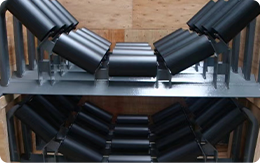 Afrikaans
Afrikaans  Albanian
Albanian  Amharic
Amharic  Arabic
Arabic  Armenian
Armenian  Azerbaijani
Azerbaijani  Basque
Basque  Belarusian
Belarusian  Bengali
Bengali  Bosnian
Bosnian  Bulgarian
Bulgarian  Catalan
Catalan  Cebuano
Cebuano  Corsican
Corsican  Croatian
Croatian  Czech
Czech  Danish
Danish  Dutch
Dutch  English
English  Esperanto
Esperanto  Estonian
Estonian  Finnish
Finnish  French
French  Frisian
Frisian  Galician
Galician  Georgian
Georgian  German
German  Greek
Greek  Gujarati
Gujarati  Haitian Creole
Haitian Creole  hausa
hausa  hawaiian
hawaiian  Hebrew
Hebrew  Hindi
Hindi  Miao
Miao  Hungarian
Hungarian  Icelandic
Icelandic  igbo
igbo  Indonesian
Indonesian  irish
irish  Italian
Italian  Japanese
Japanese  Javanese
Javanese  Kannada
Kannada  kazakh
kazakh  Khmer
Khmer  Rwandese
Rwandese  Korean
Korean  Kurdish
Kurdish  Kyrgyz
Kyrgyz  Lao
Lao  Latin
Latin  Latvian
Latvian  Lithuanian
Lithuanian  Luxembourgish
Luxembourgish  Macedonian
Macedonian  Malgashi
Malgashi  Malay
Malay  Malayalam
Malayalam  Maltese
Maltese  Maori
Maori  Marathi
Marathi  Mongolian
Mongolian  Myanmar
Myanmar  Nepali
Nepali  Norwegian
Norwegian  Norwegian
Norwegian  Occitan
Occitan  Pashto
Pashto  Persian
Persian  Polish
Polish  Portuguese
Portuguese  Punjabi
Punjabi  Romanian
Romanian  Russian
Russian  Samoan
Samoan  Scottish Gaelic
Scottish Gaelic  Serbian
Serbian  Sesotho
Sesotho  Shona
Shona  Sindhi
Sindhi  Sinhala
Sinhala  Slovak
Slovak  Slovenian
Slovenian  Somali
Somali  Spanish
Spanish  Sundanese
Sundanese  Swahili
Swahili  Swedish
Swedish  Tagalog
Tagalog  Tajik
Tajik  Tamil
Tamil  Tatar
Tatar  Telugu
Telugu  Thai
Thai  Turkish
Turkish  Turkmen
Turkmen  Ukrainian
Ukrainian  Urdu
Urdu  Uighur
Uighur  Uzbek
Uzbek  Vietnamese
Vietnamese  Welsh
Welsh  Bantu
Bantu  Yiddish
Yiddish  Yoruba
Yoruba  Zulu
Zulu snub pulley
Understanding the Snub Pulley Function and Applications
In mechanical systems, the importance of pulleys cannot be overstated. Among the various types of pulleys, the snub pulley stands out for its unique functionality and specific applications within a range of industries. A snub pulley is a type of pulley that is positioned at an angle, primarily used to redirect the path of a belt or rope. Its design allows it to change the direction of the force exerted by the belt, which can be crucial in different mechanical situations.
The primary function of a snub pulley is to improve the efficiency of power transmission systems. By helping to guide belts around corners or obstacles, it reduces the strain on other components of the system. This is particularly beneficial in applications such as conveyor systems, where the path of the belt may not be perfectly straight. By circumventing barriers or making tighter turns, snub pulleys help maintain smooth operation and prevent excessive wear on the belts.
One of the significant advantages of using a snub pulley is its ability to maintain proper tension in the system. When a belt starts to sag or lose tension, it can lead to slippage or misalignment, which can severely impact performance. The snub pulley helps to keep the belt taut by literally 'snubbing' it, allowing for consistent contact with other pulleys. This ensures efficient power transfer and minimizes the potential for breakdowns.
snub pulley

In the mining and construction industries, snub pulleys are invaluable. They are often used in large machinery and conveyor systems to transport materials efficiently. The complex layouts of such operations often make it necessary to include pulleys that can adapt to changing pathways. Snub pulleys make this possible, allowing for dynamic adjustments in the system's configuration.
Moreover, in the realm of mechanical engineering, the choice of materials for snub pulleys plays a critical role in their performance. High-strength materials that can withstand heavy loads and resist wear are often utilized, ensuring durability and reliability over time. The design and placement of the snub pulley must also be carefully considered; incorrect installation can lead to system failures and increased maintenance costs.
In conclusion, snub pulleys are essential components in various mechanical systems, providing both direction and tension control. Their importance cannot be overlooked, particularly in industries that rely on efficient material handling. Understanding their function and applications allows engineers and technicians to optimize performance and extend the lifespan of machinery. As technology advances, the role of snub pulleys will likely evolve, adapting to new challenges and improving the efficiency of mechanical systems across diverse sectors.
-
Revolutionizing Conveyor Reliability with Advanced Rubber Lagging PulleysNewsJul.22,2025
-
Powering Precision and Durability with Expert Manufacturers of Conveyor ComponentsNewsJul.22,2025
-
Optimizing Conveyor Systems with Advanced Conveyor AccessoriesNewsJul.22,2025
-
Maximize Conveyor Efficiency with Quality Conveyor Idler PulleysNewsJul.22,2025
-
Future-Proof Your Conveyor System with High-Performance Polyurethane RollerNewsJul.22,2025
-
Driving Efficiency Forward with Quality Idlers and RollersNewsJul.22,2025





























